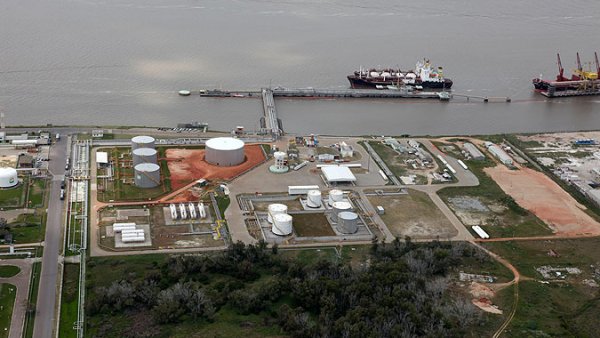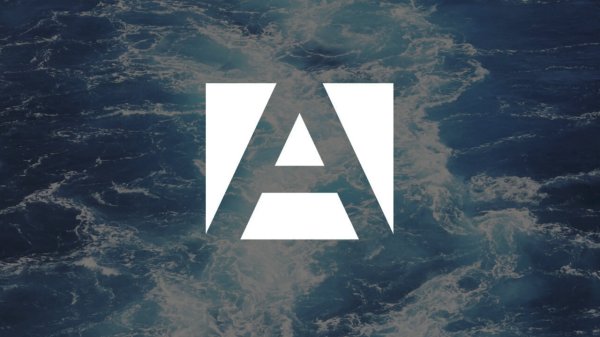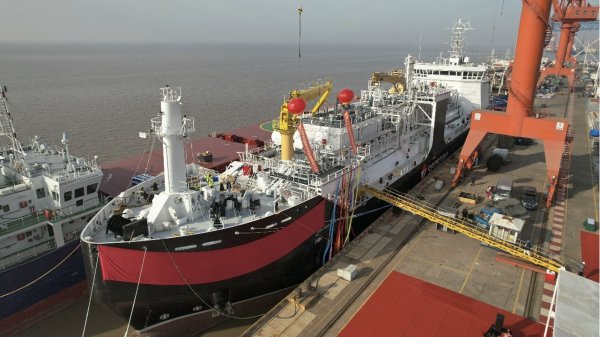China's 0.5% sulphur cap: key facts
Ships calling at key Bohai and Guangdong ports are now required to use fuel with a sulphur content not exceeding 0.5 percent when at berth.
Following recent changes to legislation in China on 1st January 2017, vessels are now required to run on fuel with a maximum sulphur content of 0.5 percent when berthed at a number of additional ports in Bohai Rim and Guangdong Province.
As previously reported by Bunker Index, ships calling at the Yangtze River Delta ports of Shanghai, Ningbo-Zhoushan (including Beilun, Chuanshan, Daxie, Zhenhai, Meishan, Shengsi, Liuheng, Dinghai, Qushan and Jintang), Suzhou, and Nantong were required to use 0.5 percent sulphur fuel during berthing from 1st April 2016.
The same regulation became effective in the Pearl River Delta port of Shenzhen on 1st October 2016.
As from 1st January 2017, the 0.5 percent regulation is now obligatory for ships when at berth or anchor at the following six ports (as well as the aforementioned locations): Tianjin, Qinhuangdao, Tangshan and Huanghua in Bohai Rim; and Guangzhou and Zhuhai in Guangdong Province.
A breakdown of the ports affected by the 2017 sulphur cap regulation has been provided below. The ports have been categorized by Emission Control Area (ECA), province and local maritime safety administration (MSA).
Pearl River Delta ECA
- Guangdong Province (Guangdong MSA): Guangzhou, Shenzhen and Zhuhai
Yangtze River Delta ECA
- Jiangsu Province (Jiangsu MSA): Nantong and Suzhou.
- Shanghai (Shanghai MSA)
- Zhejiang Province (Zhejiang MSA): Ningbo-Zhoushan (including Beilun, Chuanshan, Daxie, Zhenhai, Meishan, Shengsi, Liuheng, Dinghai, Qushan and Jintang).
Bohai Rim ECA
- Hebei Province (Hebei MSA): Huanghua, Qinhuangdao and Tangshan.
- Tianjin (Tianjin MSA).
Other key points
1. It is also important to note that the term 'berthing' in Shanghai refers to the period from when the ship is firmly fastened to a bollard until all cables are untied, whereas in the provinces of Jiangsu and Zhejiang the relevant period is within one hour after arrival and one hour before departure.
2. Ships can use alternative measures equivalent to using low-sulphur fuel, such as shore power, clean energy and exhaust gas cleaning systems.
3. Vessel are allowed to apply for an exemption to Shanghai MSA if using low-sulphur fuel oil is unsafe. Companies should submit a written application together with any relevant documents to the Shanghai MSA.
4. Records and fuel samples will need to be kept in order to avoid penalties being imposed.
Regulation timeline
Hong Kong was the first Pearl River Delta port to enforce the obligatory use of fuel with a maximum sulphur content of 0.5 percent in 2015 for ocean going vessels when at berth. Its Air Pollution Control (Ocean Going Vessels) (Fuel at Berth) Regulation, L.N. 51 of 2015, became effective on 1st July 2015.
On 1st January 2016, China's three ECAs - the Pearl River Delta, Yangtze River Delta and Bohai Rim - became effective and ships were encouraged, but not obliged, to begin using 0.5 percent sulphur fuel when at berth or anchor by the Ministry of Transport.
On 1st April 2016, the Yangtze River Delta ports of Shanghai, Ningbo-Zhoushan (including Beilun, Chuanshan, Daxie, Zhenhai, Meishan, Shengsi, Liuheng, Dinghai, Qushan and Jintang), Suzhou, and Nantong were required to use 0.5 percent sulphur fuel during berthing.
On 1st October 2016, ports calling at the Pearl River Delta port of Shenzhen were obliged to run on fuel with a maximum sulphur content of 0.5 percent during berthing.
As of January 2017, the 0.5 percent regulation is now obligatory for ships when at berth or anchor at the following ECA ports: Guangzhou, Shenzhen, Zhuhai, Shanghai, Suzhou, Nantong, Ningbo-Zhoushan (including Beilun, Chuanshan, Daxie, Zhenhai, Meishan, Shengsi, Liuheng, Dinghai, Qushan and Jintang), Huanghua, Qinhuangdao, Tangshan and Tianjin.
In January 2018, the rules will apply to ships when at berth or anchor at all ports in China's three ECAs. Then, in January 2019, the 0.5 percent regulation will extend to all ECA waters.
It is understood that the Ministry of Transport intends to reduce the 0.5 percent ECA limit to 0.1 percent on 1st January 2020, though this is yet to be confirmed.
As previously reported by Bunker Index, ships calling at the Yangtze River Delta ports of Shanghai, Ningbo-Zhoushan (including Beilun, Chuanshan, Daxie, Zhenhai, Meishan, Shengsi, Liuheng, Dinghai, Qushan and Jintang), Suzhou, and Nantong were required to use 0.5 percent sulphur fuel during berthing from 1st April 2016.
The same regulation became effective in the Pearl River Delta port of Shenzhen on 1st October 2016.
As from 1st January 2017, the 0.5 percent regulation is now obligatory for ships when at berth or anchor at the following six ports (as well as the aforementioned locations): Tianjin, Qinhuangdao, Tangshan and Huanghua in Bohai Rim; and Guangzhou and Zhuhai in Guangdong Province.
A breakdown of the ports affected by the 2017 sulphur cap regulation has been provided below. The ports have been categorized by Emission Control Area (ECA), province and local maritime safety administration (MSA).
Pearl River Delta ECA
- Guangdong Province (Guangdong MSA): Guangzhou, Shenzhen and Zhuhai
Yangtze River Delta ECA
- Jiangsu Province (Jiangsu MSA): Nantong and Suzhou.
- Shanghai (Shanghai MSA)
- Zhejiang Province (Zhejiang MSA): Ningbo-Zhoushan (including Beilun, Chuanshan, Daxie, Zhenhai, Meishan, Shengsi, Liuheng, Dinghai, Qushan and Jintang).
Bohai Rim ECA
- Hebei Province (Hebei MSA): Huanghua, Qinhuangdao and Tangshan.
- Tianjin (Tianjin MSA).
Other key points
1. It is also important to note that the term 'berthing' in Shanghai refers to the period from when the ship is firmly fastened to a bollard until all cables are untied, whereas in the provinces of Jiangsu and Zhejiang the relevant period is within one hour after arrival and one hour before departure.
2. Ships can use alternative measures equivalent to using low-sulphur fuel, such as shore power, clean energy and exhaust gas cleaning systems.
3. Vessel are allowed to apply for an exemption to Shanghai MSA if using low-sulphur fuel oil is unsafe. Companies should submit a written application together with any relevant documents to the Shanghai MSA.
4. Records and fuel samples will need to be kept in order to avoid penalties being imposed.
Regulation timeline
Hong Kong was the first Pearl River Delta port to enforce the obligatory use of fuel with a maximum sulphur content of 0.5 percent in 2015 for ocean going vessels when at berth. Its Air Pollution Control (Ocean Going Vessels) (Fuel at Berth) Regulation, L.N. 51 of 2015, became effective on 1st July 2015.
On 1st January 2016, China's three ECAs - the Pearl River Delta, Yangtze River Delta and Bohai Rim - became effective and ships were encouraged, but not obliged, to begin using 0.5 percent sulphur fuel when at berth or anchor by the Ministry of Transport.
On 1st April 2016, the Yangtze River Delta ports of Shanghai, Ningbo-Zhoushan (including Beilun, Chuanshan, Daxie, Zhenhai, Meishan, Shengsi, Liuheng, Dinghai, Qushan and Jintang), Suzhou, and Nantong were required to use 0.5 percent sulphur fuel during berthing.
On 1st October 2016, ports calling at the Pearl River Delta port of Shenzhen were obliged to run on fuel with a maximum sulphur content of 0.5 percent during berthing.
As of January 2017, the 0.5 percent regulation is now obligatory for ships when at berth or anchor at the following ECA ports: Guangzhou, Shenzhen, Zhuhai, Shanghai, Suzhou, Nantong, Ningbo-Zhoushan (including Beilun, Chuanshan, Daxie, Zhenhai, Meishan, Shengsi, Liuheng, Dinghai, Qushan and Jintang), Huanghua, Qinhuangdao, Tangshan and Tianjin.
In January 2018, the rules will apply to ships when at berth or anchor at all ports in China's three ECAs. Then, in January 2019, the 0.5 percent regulation will extend to all ECA waters.
It is understood that the Ministry of Transport intends to reduce the 0.5 percent ECA limit to 0.1 percent on 1st January 2020, though this is yet to be confirmed.

|
IMO approves pricing mechanism based on GHG intensity thresholds
Charges to be levied on ships that do not meet yearly GHG fuel intensity reduction targets. |
|
|
|
||

|
VARO Energy expands renewable portfolio with Preem acquisition
All-cash transaction expected to complete in the latter half of 2025. |
|
|
|
||

|
NYK trials biofuel in milestone coal carrier test
Vessel is used to test biofuel for domestic utility company. |
|
|
|
||

|
H-Line Shipping orders LNG bunkering vessel
Vessel with 18,000-cbm capacity to run on both LNG and MDO. |
|
|
|
||

|
How to engineer and manage green shipping fuels | Stanley George, VPS
Effective management strategies and insights for evolving fuel use. |
|
|
|
||

|
Swedish government bans scrubber wastewater discharges
Discharges from open-loop scrubbers to be prohibited in Swedish waters from July 2025. |
|
|
|
||

|
MAN Energy Solutions achieves 100% load milestone for ammonia engine
Latest tests validate fuel injection system throughout the entire load curve. |
|
|
|
||

|
Petrobras secures ISCC EU RED certification for B24 biofuel blend at Rio Grande
Blend consisting of 24% FAME is said to have been rigorously tested to meet international standards. |
|
|
|
||

|
Stolt-Nielsen to fully control Avenir LNG with acquisition
Share purchase agreement to buy all shares from Golar LNG and Aequitas. |
|
|
|
||

|
Bureau Veritas supports launch of CIMC SOE's LNG bunkering vessel
Handover of Seaspan Energy's cutting-edge 7,600-cbm vessel completed. |
|
|
|
||
Related Links
- · Shenzhen 0.5% sulphur cap now effective [Insights]
- · Shenzhen outlines 0.5% sulphur cap requirements [Insights]
- · Tanker owners advised to bunker 0.5% fuel in China 'to be on the safe side' [Insights]
- · Yangtze River Delta to implement 0.5% sulphur directive in April [Insights]
- · Hong Kong ECA planned for Jan 2019 [Insights]
- · China [Directory]

